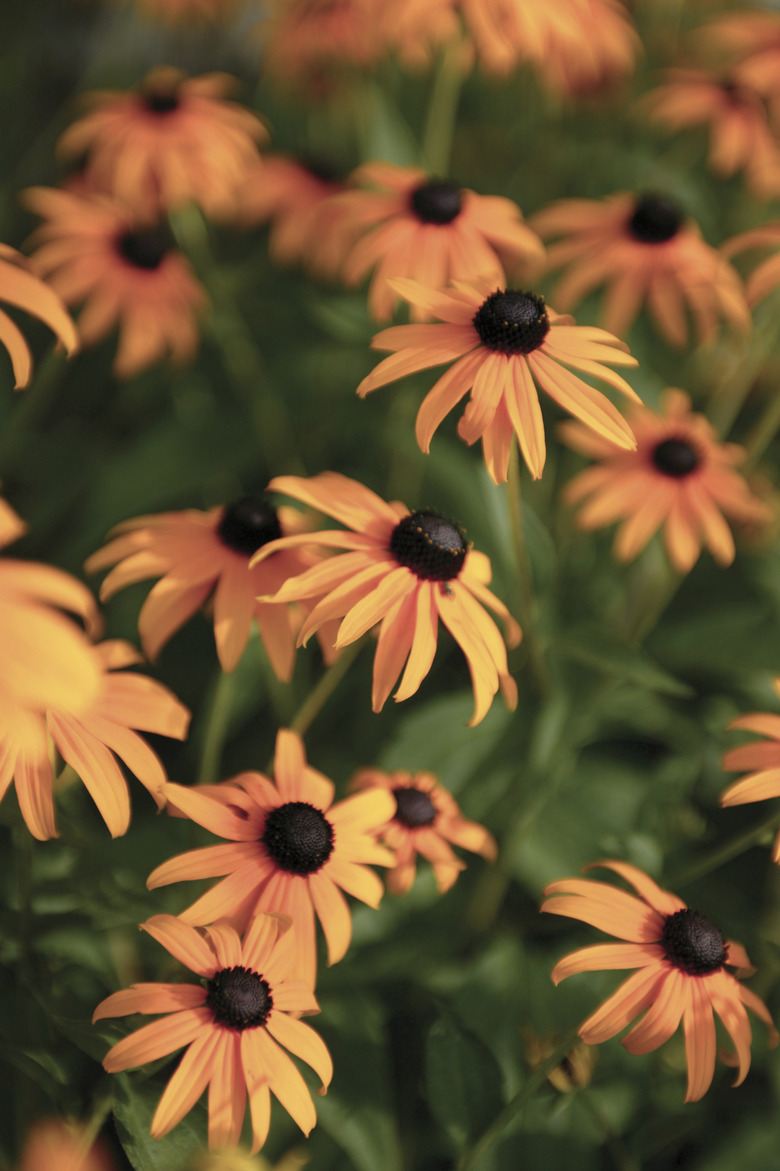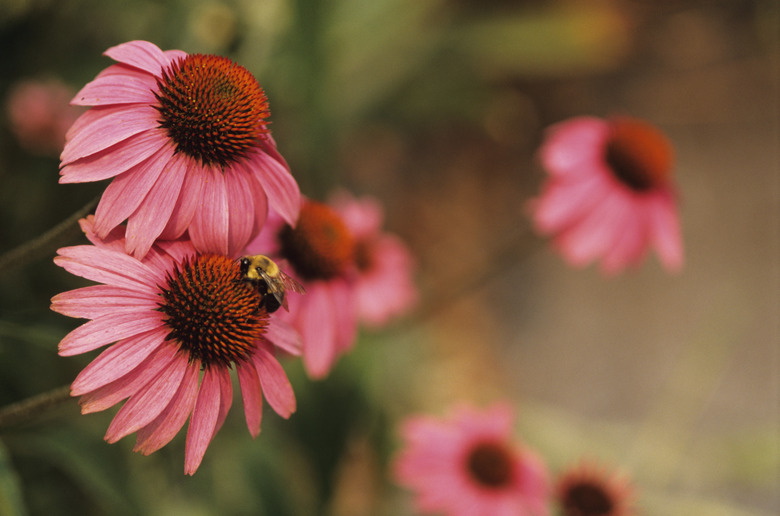Purple Coneflower Vs. Black-Eyed Susans For My Garden
Purple coneflowers (Echincea purpurea) and black-eyed Susans (Rudbeckia fulgida) are sometimes both called coneflowers, but the two are distinct species. Both are perennials — which means they live year after year — and both are wildflowers native to forests, prairies and meadows of eastern North America. When planted together, these flowers bloom at the same time in late summer, creating complementary purple and yellow flowers that draw butterflies and bees to the yard.
Size and Form
Step 1
Both purple coneflowers and black-eyed Susans grow in clumps, topped by long flowers stems. Purple coneflowers are the taller of the two, reaching heights to 5 feet and spreading up to 2 feet wide. Black-eyed Susans grow up to 3 feet tall and spread to 2 1/2 feet wide. Purple coneflowers have rigid stems that last long after the blooms have withered away and tend to self-seed. Black-eyed Susans spread by rhizomes, or underground roots.
- Purple coneflowers (Echincea purpurea) and black-eyed Susans (Rudbeckia fulgida) are sometimes both called coneflowers, but the two are distinct species.
- Purple coneflowers are the taller of the two, reaching heights to 5 feet and spreading up to 2 feet wide.
Blooms and Foliage
Step 1
Despite their name, purple coneflowers bloom with pink and rosy purple flowers, and some cultivars produce white blossoms. Coneflowers bloom from June through August with daisy-shaped, slightly drooping petals surrounding a bronze-orange center disk. Deadheading old flowers encourages the plants to bloom again in fall, but seed heads left on the plants attract small birds to the yard. Black-eyed Susans also start blooming in June, but continue to produce flowers through October. These daisy-like, yellow-orange petals surround brown-purple disks. Deadheading old flowers encourages the plants to produce more blossoms. Both species have lance-shaped leaves, though the coneflower has darker leaves with toothed margins.
- Despite their name, purple coneflowers bloom with pink and rosy purple flowers, and some cultivars produce white blossoms.
- Deadheading old flowers encourages the plants to bloom again in fall, but seed heads left on the plants attract small birds to the yard.
Requirements
Step 1
Purple coneflowers and black-eyed Susans are often grouped together in the garden, as they share many sun, soil and moisture requirements. Both grow well in full sun to partial shade exposures and prefer well-draining soil. Both tolerate clay, dry and rocky soil, tolerate drought, and resist browsing deer. Purple coneflowers grow in U.S. Department of Agriculture plant hardiness zones 3 through 8, while black-eyed Susans grow in USDA zones 3 through 9.
Uses and Potential Problems
Step 1
Both purple coneflowers and black-eyed Susans make colorful, low-maintenance additions to native gardens, borders, perennial beds or naturalized areas. Purple coneflowers are attractive in partially shaded woodland gardens, while black-eyed Susans add bright color to cottage gardens. Purple coneflowers may occasionally experience damage from Japanese beetles or leaf spot. Black-eyed Susans aren't generally susceptible to pests or diseases.
- Purple coneflowers and black-eyed Susans are often grouped together in the garden, as they share many sun, soil and moisture requirements.
- Purple coneflowers are attractive in partially shaded woodland gardens, while black-eyed Susans add bright color to cottage gardens.

